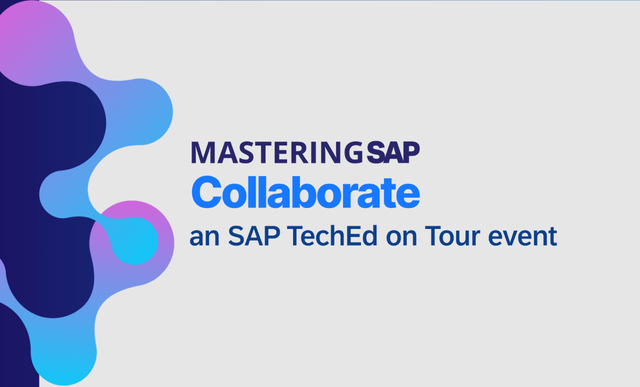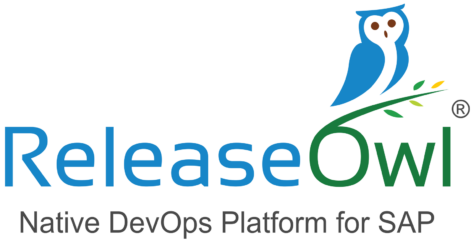SAP Simulation
Filter By
Browse By
- SAP Analytics and AI
- SAP Application Development and Integration
- All SAP Application Development and Integration
- SAP ABAP
- SAP ABAP Development Tools
- SAP ABAP Test Cockpit
- SAP API Management
- SAP BAPI
- SAP Basis
- SAP BRF
- SAP Business Application Studio
- SAP CMS
- SAP Design Studio
- SAP Development Tools
- SAP DevOps
- SAP EAI
- SAP EDI
- SAP Extension Suite
- SAP Fiori
- SAP Fiori Elements
- SAP Integration Suite
- SAP Low Code Application Development
- SAP Low Code Automation
- SAP Netweaver
- SAP Release Management
- SAP UI5
- SAP Web Application Server
- SAP Web IDE
- SAP Business Process Management
- SAP Center of Excellence
- SAP CIO
- SAP Customer Experience
- SAP Data and Data Management
- All SAP Data and Data Management
- SAP BW
- SAP BW/4HANA
- SAP Crystal Reports
- SAP Data Archiving
- SAP Data Center
- SAP Data Governance
- SAP Data Integration
- SAP Data Migration
- SAP Data Quality
- SAP Data Services
- SAP Data Strategy
- SAP Data Visualization
- SAP Data Warehouse Cloud
- SAP DMS
- SAP Document Control
- SAP EIM
- SAP ETL
- SAP ETL Tools
- SAP HANA
- SAP HANA Administration
- SAP HANA Deployment Infrastructure
- SAP HANA Studio
- SAP Master Data
- SAP Master Data Governance
- SAP MDM
- SAP Enterprise Architect
- SAP Enterprise Asset Management
- SAP ERP
- SAP Finance
- All SAP Finance
- SAP Accounting
- SAP AR AP
- SAP Asset Accounting
- SAP Billing Systems
- SAP BPC
- SAP BRIM
- SAP Cash Management
- SAP Central Finance
- SAP Controlling
- SAP COPA
- SAP Cost Center Accounting
- SAP Currency Risk
- SAP e-invoicing
- SAP FICO
- SAP Finance Automation
- SAP Advanced Financial Closing
- SAP Financial Consolidation
- SAP Financial Planning
- SAP FX Risk
- SAP General Ledger
- SAP Global Tax Management
- SAP Hyperion
- SAP Order to Cash
- SAP Payment Processing
- SAP Profitability Analysis
- SAP Rebate Management
- SAP S/4HANA Finance
- SAP SWIFT Compliance
- SAP Treasury Management
- SAP Universal Journal
- SAP Governance Risk and Compliance
- SAP Human Capital Management
- SAP Intelligent Technologies
- SAP Platform and Technology
- All SAP Platform and Technology
- SAP Business Technology Platform
- SAP Cloud
- SAP Cloud Connector
- SAP Cloud Integration Platform
- SAP Cloud Migration
- SAP Cloud Platform
- SAP Cloud Providers
- SAP Cloud Strategy
- SAP Digital Signature
- SAP Container Platform
- SAP HANA Enterprise Cloud
- SAP Digital Asset Management
- SAP Smart Forms
- SAP HEC
- SAP Digital Integration Hub
- SAP Hyperscalers
- SAP Infrastructure
- SAP Messaging
- SAP Quality and Testing
- SAP Security
- SAP Spend Management
- SAP Supply Chain Management
- All SAP Supply Chain Management
- SAP APO
- SAP Asset Management
- SAP Business Network
- SAP Digital Manufacturing Cloud
- SAP Digital Twin
- SAP EWM
- SAP IBP
- SAP Inventory Management
- SAP Label Printing
- SAP Logistics
- SAP Manufacturing
- SAP Manufacturing Automation
- SAP MES
- SAP MII
- SAP MM
- SAP MRO
- SAP MRP
- SAP Order Management
- SAP Plant Maintenance
- SAP PLM
- SAP Production Planning
- SAP S&OP
- SAP SD
- SAP SPM
- SAP Supply Chain Planning
- SAP Track and Trace
- SAP Transportation Management
- SAP System Administration
What is Simulation?
Simulation modeling is the capability to leverage analytics and digital tools to help answer “what-if” questions in the business context. These tools help you evaluate the impact of business decisions on your business processes and may help you select the most optimal decision. An example may be manufacturing scheduling. A simulation modeling tool can help you evaluate the impact of various scheduling approaches on manufacturing cycle time.
What is Simulation?
Simulation modeling is the capability to leverage analytics and digital tools to help answer “what-if” questions in the business context. These tools help you evaluate the impact of business decisions on your business processes and may help you select the most optimal decision. An example may be manufacturing scheduling. A simulation modeling tool can help you evaluate the impact of various scheduling approaches on manufacturing cycle time.
Simulation tools often help evaluate recommendations from other analytics approaches like optimization, without implementing those recommendations in the real-world. The three most widely used process simulation modeling types are:
- System dynamics
- Discrete event modeling
- Agent-based modeling
Simulation Technologies Available in the SAP World
Process simulation modeling tools have been leveraged extensively in SAP technology ecosystem. An example is SIMUL8, which is a flow simulation program that can help you visualize your process flows, understand the bottlenecks, and evaluate the impact of change in parameters on the process. As far as non-SAP process simulation modeling solutions are concerned, all leading simulation software tools like AnyLogic and Simio integrate well with SAP environments.
Key Considerations for SAPinsiders
Understand the methods and process alignment. The choice of method that should be used is based on the system being modeled and the purpose of the model. It is therefore critical to understand which specific simulation method will be a good fit. This is important from the perspective of tools being leveraged since some tools have more coverage and use cases in certain methods.
Define the level of abstraction of the process model. This is where you define how detailed your model needs to be. Remember that this depends on the modeling objective. As an example, if you are trying to gain an understanding of the cycle time of a product flow across the supply chain, you do not need to model individual processes within a manufacturing location. But if your simulation model is going to focus on the impact of changeover time on a manufacturing line, you may have to model the entire line flow in detail.
Think about integration with tools like business process intelligence (BPI). Note that the majority of BPI tools already do a good job of capturing process flow and building a model from that flow. Not all of them, however, offer simulation capabilities and those that do may not have the features a standalone pure simulation tool or module may offer. By strategically integrating a simulation tool with a BPI tool, you can create a solution that takes your process management capabilities even further.
420 results
-

 Premium
Premium
Quickly Find Specific PSA Entries Among Thousands of Records
Reading time: 7 mins
Learn how to easily find the specific Persistent Staging Area (PSA) entry you’re looking for with these simple steps. Key Concept A BW system stores raw source system data in Persistent Staging Area (PSA). Behind the scenes, PSA is simply a transparent table that has the same fields as the source system’s transfer structure. When...…
-

 Premium
Premium
How to Design and Develop Flexible Month-End Financial Allocation Solutions
Reading time: 21 mins
Find out about best practices and performance improvement tips for designing and developing month-end financial allocations using a combination of Business Planning and Simulation, Integrated Planning, ABAP function modules, and SAP NetWeaver BW. Key Concept The allocation process is performed in two steps, high level and low level. During the high-level allocation, finance data at...…
-

- SAP Payroll
 Premium
Premium
An Introduction to SAP Payroll Processing Control Center Add-On
Reading time: 14 mins
Learn about the functionality of the new front-end interface of the SAP Payroll Processing, control center add-on tool, used by organizations to innovate their payroll processes by providing a new user experience for running payroll and resolving payroll issues. Learn the business reasons for implementing this functionality and learn about the different roles and responsibilities...…
-
-

Safety Stock Planning – Part 4: SAP Add-On Simulation of Safety Stock: Service Level Optimization
Reading time: 3 mins
SAP offers consulting solutions to enable the first step in demand-driven planning, the strategic inventory positioning. For this you can use the consulting solution MRP Monitor to detect which of your materials should be buffered.
-

- SAP BRF
 Premium
Premium
A Step-by-Step Guide to Business Rules Framework Plus
Reading time: 13 mins
Learn the essentials of the SAP Business Rules Framework Plus (BRFplus) rules. Discover how to work with the BRFplus tool, how to create a simulation for rules, and how to call a rule from an ABAP program. Key Concept The BRFplus tool provides a sophisticated user interface for creating functions that comprise a number of...…
-

- SAP Sustainability
 Premium
Premium
Gamifying Sustainability
Reading time: 7 mins
Environmental, Social, and Governance (ESG) considerations are an increasingly significant part of the decision-making process for organizations. It can be difficult to for organizations to forecast the impact of some of these decisions. Some are now turning to gamified simulations to play out scenarios. Baton Simulations offers its ERPsim solution to gain insights into the…
-

 Premium
Premium
Use Order Change Management to Automatically Apply Last-Minute Changes to Production Orders
Reading time: 8 mins
Discover how order change management (OCM) improves manufacturing accuracy and customer satisfaction by ensuring that production orders conform to the latest product structure and sales order data. OCM is well integrated with sales orders for configurable products. It also helps prevent the cancellation and repetition of sales orders by ensuring that changes to product features...…
-
-

 Premium
Premium
Tips on Spreading Depreciation with the Smoothing Indicator
Reading time: 6 mins
Kees van Westerop alerts you to some unexpected effects when you use the smoothing indicator, which spreads depreciation costs over the current year. Key Concept Asset accounting in an SAP system offers several ways to control the depreciation of fixed assets. It enables the simultaneous posting of asset depreciations as well as the simultaneous reporting...…
-

 Premium
Premium
How to Detect BPC Risk in SAP Access Control
Reading time: 17 mins
Discover how to detect cross-system risk between SAP ERP and SAP Business Planning and Consolidation (BPC). See how BPC task profiles map to business functions and understand how to create cross-system connector groups and assign appropriate connectors to that group. Key Concept Cross-system groups logically define what connectors are involved in cross-system risk analysis. Task...…
-

- SAP Access Control
 Premium
Premium
Business Role Versioning Added in SAP Access Control 10.1
Reading time: 11 mins
Business role versioning is a functionality introduced in SAP Access Control 10.1 that enables you to have an active and a draft version of a business role. After implementing business role versioning, users can edit business roles by adding or removing new roles without affecting the active version of the business role. Key Concept Business...…
Become a Member
Unlimited access to thousands of resources for SAP-specific expertise that can only be found here.
Become a Partner
Access exclusive SAP insights, expert marketing strategies, and high-value services including research reports, webinars, and buyers' guides, all designed to boost your campaign ROI by up to 50% within the SAP ecosystem.
Upcoming Events
-

Mastering SAP Collaborate, an SAP TechEd on Tour event
November 12 - 14, 2025
Sydney, New South Wales
Australia
View Event
Related Vendors
Your request has been successfully sent

